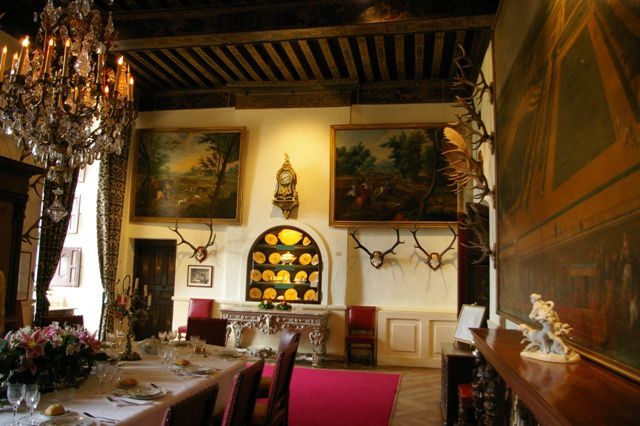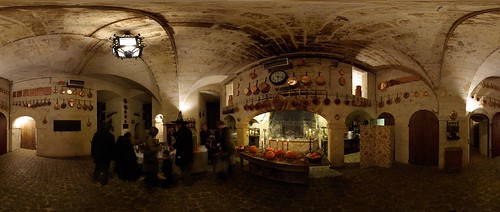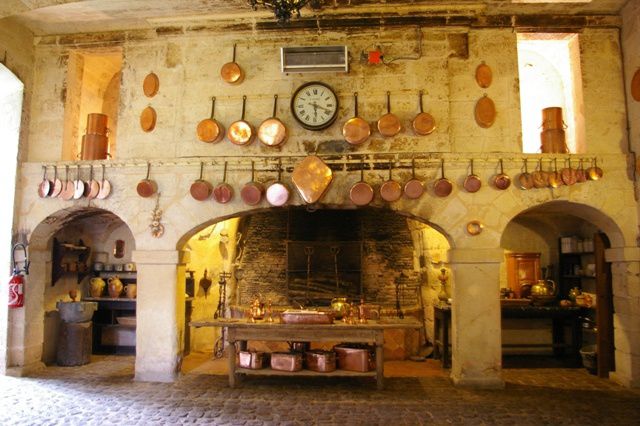Kitchens of the Château de Brissac
The Château de Brissac is one of the hidden gems of the Loire Valley in western France. Located in the small town of Brissac-Quincé, Maine-et-Loire, I decided to visit when I was working in the area during the summer of 2001. It seems to be well-known in the area, but I rarely hear of it mentioned among the famous French châteaux.
The house underwent a number of construction phases, though what we can see today stems mostly from sixteenth-century renovations carried out by Pierre de Brézé, and early seventeenth-century renovations carried out by Charles II de Cossé, First Duke of Brissac. The Cossé family continues to live in the castle. The current duke, François de Cossé-Brissac, is the thirteenth Duke of Brissac although noble titles are not officially recognized in modern France.
 |
| Château de Brissac from the west. |
 |
| Château de Brissac from the east. |
I am not aware of any famous cooks who were in the employ of the dukes, though their dining room speaks to the fact that food was an important element of hospitality at the castle. Stags' horns, a primary decorative motif in aristocratic country houses, remind diners of the bounty of the flora and fauna available on the ducal estate. Since the castle continues to be a family home, the dining room is used on formal occasions when the duke is entertaining.
 |
| Dining room. |
 |
| Dining room (note the serving screen and musicians' balcony at the opposite end. Food was brought into the dining room through this door). |
The kitchen is one of the most impressive rooms in the building. The core of the room is a result of the sixteenth-century renovation carried out by Brézé, with later alterations carried out during the first duke's renovations.
| The sixteenth/seventeenth-century kitchen. |
The hearth is enclosed under a massive stone chimney that even has dry-storage rooms built into either side of the upper portion. The copper pots and pans displayed on the chimney are likely from the nineteenth and twentieth centuries. When the kitchen was originally built, the tile counter that is directly in the middle of the hearth would not have been there, replaced instead with large andirons supporting spits. Massive flagging stones pave the floor while vaulted ceilings support the weight of the castle above.
 |
| Panoramic. |
 |
| Hearth. |
 |
| Hearth. |
The kitchen no longer serves its original purpose, although the owners now use it as a dining space to host public dinners and historic meals. There are a number of additional service rooms around the kitchen though visitors are not granted access to these rooms. There is no evidence of a baking oven or boiling area in the main kitchen, so I suspect that these are among the rooms that are closed to the public. It is a wonderful castle and well worth a visit to Brissac-Quincé for those interested in historic houses and kitchens.
By: Ryan Whibbs
Photo credits (Wikimedia users): Manfred Heyde, Kormin. Also, Naulidor (c 2001-2012) & Marc Fineltin.
By: Ryan Whibbs
Photo credits (Wikimedia users): Manfred Heyde, Kormin. Also, Naulidor (c 2001-2012) & Marc Fineltin.
No comments:
Post a Comment
Note: only a member of this blog may post a comment.